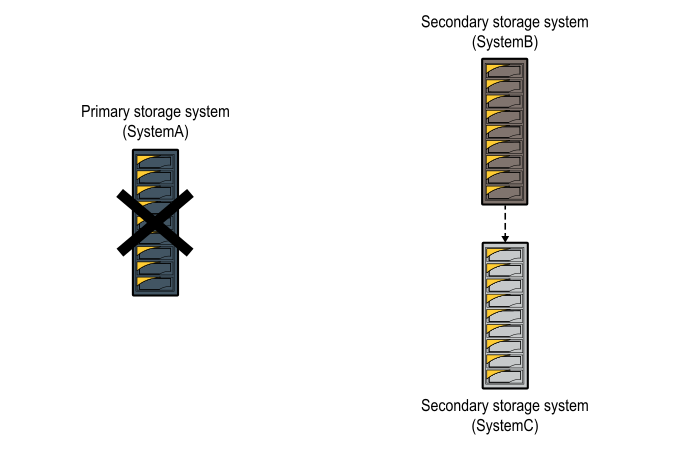Remote Copy SLD failover operation to a synchronous target
A failover changes the secondary Remote Copy groups on the synchronous target to primary. When failing over to a synchronous target, the failover operation responds differently based on the auto synchronize policy setting.
In this example, before the failover,
SystemA is the primary system,
SystemB is the synchronous secondary target, and
SystemC is the periodic secondary target. After the failover,
SystemB is the primary-rev system and
SystemC is the periodic secondary target. Replication occurs between
SystemB and
SystemC.
When the synchronous target system becomes the failover system, the synchronous target system assumes the role of the primary system. The host has read/write access to the volumes in the Remote Copy groups on the synchronous system.

Changes the SLD Remote Copy group Target role from Secondary, Secondary to Primary-Rev, Secondary (
SystemBandSystemC).Changes the DR state to Failover.
Provides the host read/write access to the source and synchronous systems (
SystemAandSystemB).
Changes the SLD Remote Copy group Source system to the synchronous target system (
SystemB) and makes the role Primary.SystemAis now a secondary system.Keeps the DR state as Normal.
Provides the host read/write access to the source and synchronous systems (
SystemAandSystemB).